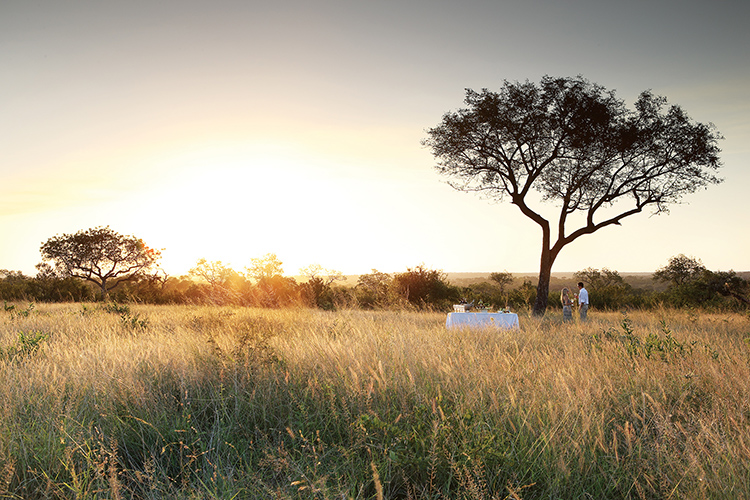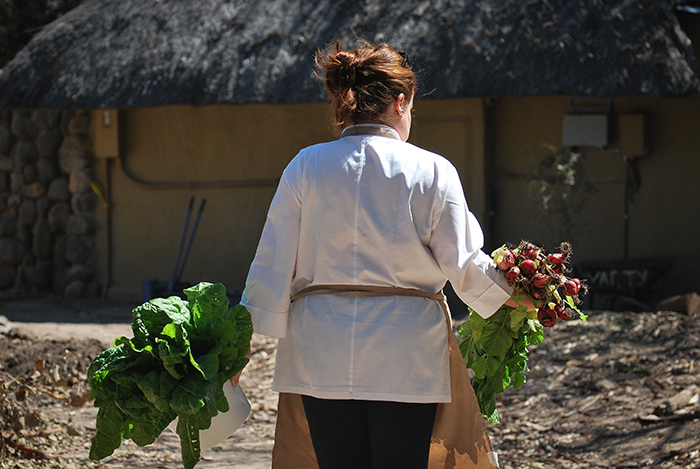Rusks
The quintessential way to start your morning in Africa! It is a hard, dry biscuit or a twice-baked bread and most commonly dunked into your cup of Rooibos tea or coffee. The rusk is a light and easy way to give your body something to feed on whilst you build up your appetite on a morning game drive. Fans of the rusk will often debate whether the Buttermilk/Condensed milk rusk is better than the Raisin & nut option. A purely subjective choice that can vary over time.
Rooibos Tea
Rooibos literally means red bush (scientific name Aspalathus linearis). Rooibos is usually grown in the Cederberg, a mountainous region of the Western Cape province of South Africa. Dutch settlers to the Cape learned to drink rooibos tea as an alternative to black tea, which was an expensive commodity for the settlers who relied on supply ships from Europe. Caffeine-free and delicious, we also use rooibos to flavour homemade ice cream!
Rooibos has also been used to create different varieties of South African gin, an no list of South Africa food would be complete without mentioning this classic & refreshing bushveld drink. Gin and Tonic has been a part of the Londolozi story since its founding in 1926. It all began at an auspicious tennis party, where Charles Varty and Frank Unger, after a few too many G&T’s, agreed to buy a piece of the Lowveld bush, site unseen. It is almost 90 years on and Londolozi’s love affair with the G&T continues.
Aside from the Rooibos gin (see below), our camp managers are renowned for their own unique craft gin recipes which you can check out here:
Biltong
Biltong is a form of dried, cured meat that originated in South Africa, Zimbabwe and Namibia. Various types of meat are used to produce it, ranging from beef and game meats to fillets of meat cut into strips following the grain of the muscle, or flat pieces sliced across the grain. It is related to beef jerky in that they are both spiced, dried meats; however, the typical ingredients, taste and production processes differ.
John and Charlotte told me how much they loved biltong this on their game drive as a sundowner snack amongst other things.
Shangaan Spinach
A wonderfully rich dish of homegrown spinach, mixed with ground peanuts, cream & delicate spices. A perfect compliment to meat and other vegetables. True to the Relais & Chateaux values of commitment – ‘Taste of the Land’ – we pride ourselves on supporting the Londolozi village and are proud to say that 45% of all the green leaves on our menu come from our village gardens! These gardens are run by the Londolozi staff; from butlers to housekeepers, chefs and our habitat team! Over the past two years, these gardens have grown abundantly and we are looking forward to adding more vegetables to the menu. There is nothing better than the fresh, crisp taste of home grown rocket or spinach on a plate.
Pap & Sheeba
Pap is a traditional dish that is native to South Africans; the dish is made from softly grounded maize, which is then cooked to the chef’s desired idea of the meal that they have in mind. However grounded maize may be found in other parts of the world as well, and just differs in name. The word pap is Dutch (similar to South Africa’s Afrikaans language), and simply means “porridge” in English.
South African pap is found in every part of South Africa and is one of the country’s most staple foods.
Pap is traditionally served with Sheeba, which is a cooked sauce made of tomatoes & onions – the two combined with a piece of boerewors from the braai is the best way to eat it!
Boerewors on the Braais
Wherever you travel in South Africa, you will be sure to come across some sort of braai. It is an essential tradition to light a fire and throw a piece of boerewors on whilst listening to the evening descend into orchestral sounds. We need no excuse to do this somewhere in the bushveld!
Boerewors is a type of sausage originating in South Africa, an important part of our cuisine and it is popular across the sub-continent. The name is derived from the Afrikaans words boer(“farmer”) and wors (“sausage”). Boerewors must contain at least 90 percent meat, and always contain beef, as well as lamb, pork, or a mixture of lamb and pork. The other 10% is made up of spices and other ingredients.
A ‘braai’ is a South African term for barbeque, where meat is cooked outside on an open fire or grid. Braai’s are typically social affairs where everyone is invited to spend time around the fire talking, drinking and savouring the food as its come hot off the fire.

Bobotie
John and Charlotte were asking if they would have this on safari at Londolozi, and it so happened we were serving it that night! This well-known South African dish consists of spiced minced meat baked with an egg-based topping. Traditionally served with yellow rice & chutney.
The first recipe for bobotie appeared in a Dutch cookbook in 1609, it was taken to South Africa and adopted by the Cape Malay community.
Malva Pudding
Malva pudding is a sweet pudding of Cape Malay origin. It contains apricot jam and has a spongy caramelized texture. A cream sauce is poured over it while it is hot, and it is usually served hot with homemade ice-cream
Amarula
Not only delicious on a cold winter’s morning, Amarula is a sweet, creamy liqeur made from the marula fruit that elephants go crazy for, and it can be drunk anytime in the day! From your coffee in the morning to poured on crushed ice during the day and into a Dom Pedro or Irish Coffee in the evening, Amarula is a fantastic companion to a wide variety of drinks.
At Londolozi, we whip in Amarula to a soft butter and serve it with our home baked Banana bread in the mornings.
When you come on safari to Londolozi, we serve a selection of South African and fusion dishes on both our Summer & Winter menus – this giving you a choice of what to indulge in, although most of our guests go for everything! Most safari lodges are located far from suppliers, which is why it’s so important to let us know any dietary preferences well in advance of your arrival.
Having been on safari at Londolozi or elsewhere, what are some of the other dishes that you think should be added to this list? Please leave your thoughts in the comment section below as it would be great to hear your ideas…









